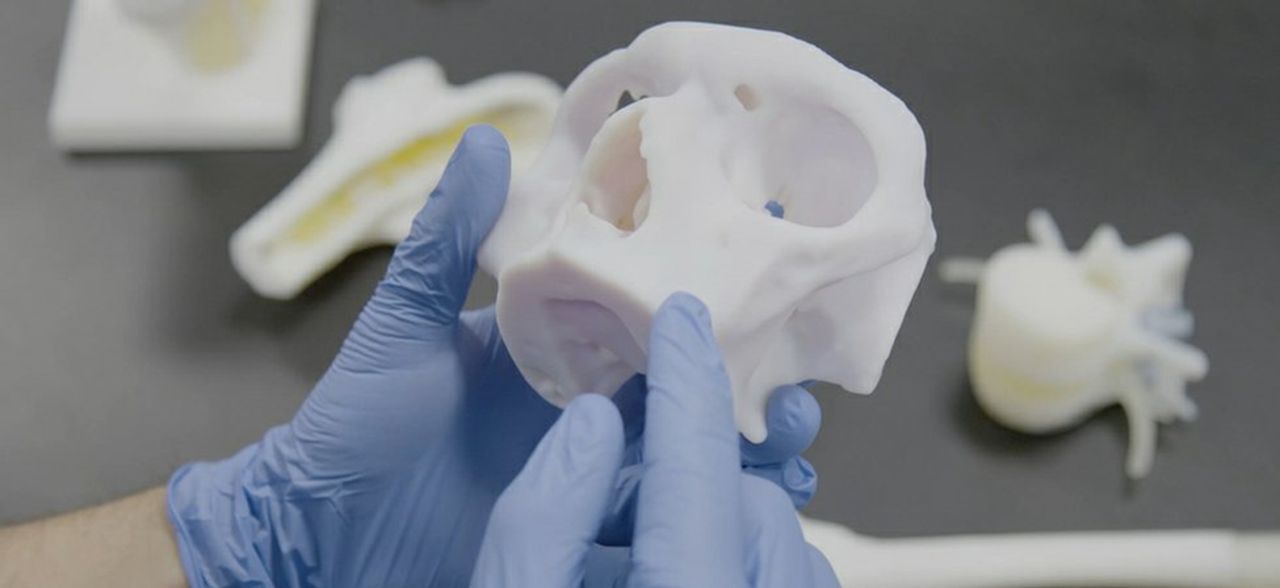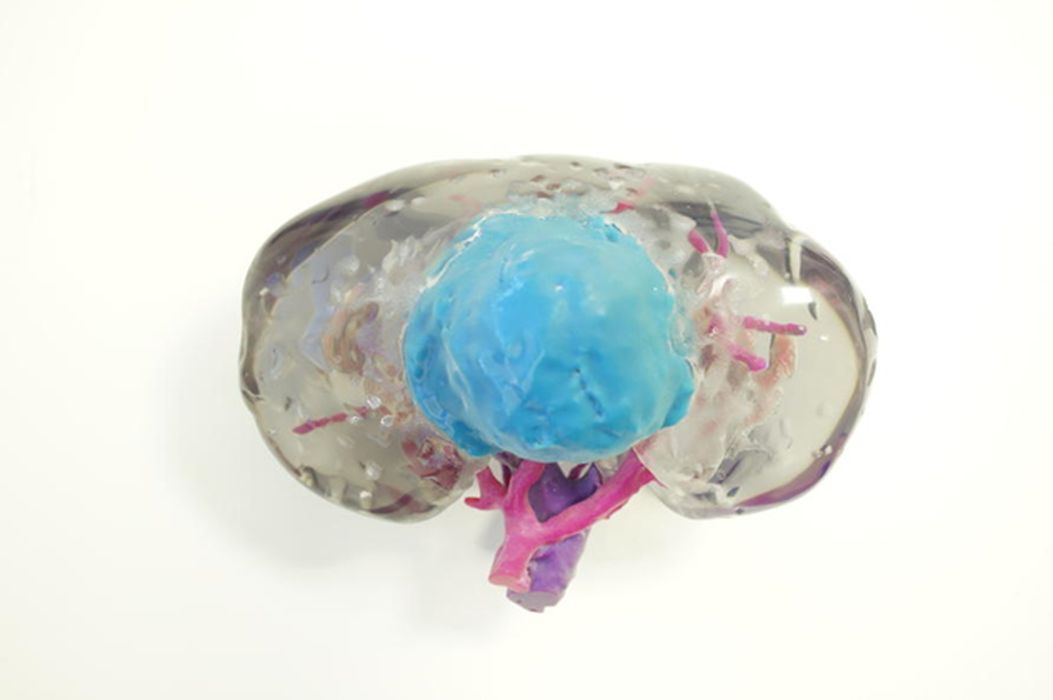
Charles R. Goulding and Justin Snyder review findings from a webinar describing unique AM applications for healthcare.
On June 22 the Additive Manufacturing Coalition hosted a webinar titled Additive Manufacturing Medical Solutions for Patient Point of Care Opportunities. Additive manufacturing has many uses and applications, but some of the most exciting and beneficial are in the field of medicine, more specifically at the patient’s point of care.
Patient point of care refers to the testing and other medical procedures that can be performed at the same time and place where patient care is occurring. Specifically, in regard to surgical processes and medical instruments, there could be a significant opportunity for additive manufacturing integration.
Allowing for True Informed Consent
One of the more understated applications of additive manufacturing for patient point of care is the ability to provide true informed consent. In the context of potentially life-altering surgery, it is often difficult to articulate the magnitude of a procedure and the complications that may arise. In most cases, the only visuals available to aid in expressing this information to patients are MRI, CT, and X-ray print outs.
While the information conveyed in these images is clear to a qualified radiologist, the average layperson may as well be looking at an abstract painting. This makes it difficult to provide genuine informed consent as the patient cannot comprehend the scope of what needs to be done or even what is afflicting them.
Additive manufacturing resolve this challenge by printing anatomically correct models that are realistic replicas of the affected areas. With these models physicians can then walk patients through every step of the procedure and how it could affect various other parts of the body.
Unobscured Surgical Vision

Another application of additive manufacturing for patient point of care is allowing surgeons the capability to see parts of the body that they normally wouldn’t be able to do during surgery.
An example is the removal of tumors that are closely intertwined with various internal functions. Sometimes these growths can obscure the view of arteries, veins, and organs. This makes the procedures very difficult as there is added caution due to the need to actively avoid important parts of the body during the removal process.
With replica anatomical models, a surgeon can have a 1:1 copy of the affected area for pre-surgery reference, giving them knowledge of where these parts might be even if the view inside the patient’s actual body is obscured. This is an invaluable tool that could greatly lead to increased surgical success and reduced malpractice in the form of surgical complications due to obstructed surgical vision.
Supply Chain Solutions
The Covid-19 pandemic highlighted another need for additive manufacturing in the healthcare space in the form of bypassing supply chain shortages.
Covid tests utilize nasopharyngeal swabs like many other illnesses, but the sudden astronomical increase in tests put a large strain on the supply chain. This was especially prevalent considering how the pandemic led to the stoppage of many major manufacturers and other supply companies.
In response, the University of South Florida created a 3D printable design for these swabs. After testing and verifying the swabs’ efficacy compared to standard swabs, the University then shared this design with institutions around the world, free of charge.
While this was a unique case considering the unprecedented nature of the pandemic, this showcases an incredible opportunity for the healthcare industry as a whole. There are many instruments and tools that are unique and need to be ordered through specialized suppliers in a hospital, but there are also a variety of testing apparatuses, sanitary devices, and miscellaneous tools that could be designed for 3D printing and produced in-house.
While the case of the University of South Florida was an incredible humanitarian decision in dire times to release their design for free, there is a financial opportunity for design firms here to sell these designs independently.
Surgical Planning for High-Risk Procedures
There are many cases where surgical procedures are subjected to critical time constraints or other factors out of the operating physician’s control. It is difficult to prepare for these types of procedures in the sense of simulating the timing, precision, and atmosphere that may be included.
With additive manufacturing, it is possible to create anatomical models that simulate the exact anomaly which can then be operated on under whatever time constraint and factors that may come with that specific operation. This allows the surgeons to more quicklly acclimate themselves to the required conditions. An example of this would be surgery for newborns in which the time between birth and completing the procedure must be as short as possible to limit the possibility of complications.
The Research & Development Tax Credit
The now permanent Research and Development (R&D) Tax Credit is available for companies developing new or improved products, processes and/or software.
3D printing can help boost a company’s R&D Tax Credits. Wages for technical employees creating, testing and revising 3D printed prototypes can be included as a percentage of eligible time spent integrating 3D printing hardware and software counts as an eligible activity. Lastly, when used for modeling and preproduction, the costs of filaments consumed during the development process may also be recovered.
Whether it is used for creating and testing prototypes or for final production, 3D printing is a great indicator that R&D Credit eligible activities are taking place. Companies implementing this technology at any point should consider taking advantage of R&D Tax Credits.
Conclusion
This webinar showed that the capabilities of additive manufacturing in the medical world are endless. Surgical assistance, informed consent, and in-house instrument manufacturing are just the beginning. As more hospitals and providers begin to add some form of additive manufacturing technology, the applications will expand far beyond to even 3D printing of metal-based medical tools soon.
There are still some hiccups to worldwide acceptance. A regulatory push towards more stringent standards ensuring a lack of discrepancy from machine to machine is a step in the right direction. Insurance providers are also coming around to covering additive manufacturing-related statements which would make hospitals and other facilities more likely to widely use this technology.
Webinar VOD Link: AM Medical Solutions for Patient Point of Care Opportunities
